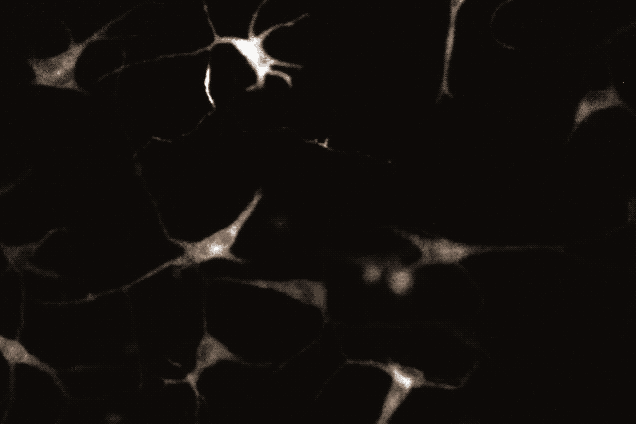Neuron-like activity detected in an unforeseen place

The cells under Sanford M. Simon's microscope could easily be mistaken for neurons—they sport the characteristic long branches, and blips of light indicating bursts of calcium traveling from cell to cell. But looks can deceive. Members of the lab have found that neuron-like signaling exists outside of the nervous system—what you're actually seeing is skin cells known as melanocytes.
Stationed at the bottom of the skin's epidermis, melanocytes produce UV-absorbing pigment that protects keratinocytes, other skin cells found in the topmost layer. In exploring this process, Simon and Rachel Belote, a graduate student in the lab, noticed a mode of communication they didn't think such cells capable of.
"We saw that keratinocytes wrap around melanocytes, forming intimate connections that reminded us of neurons," says Simon. "And when we added a calcium sensor to the melanocytes, we saw spikes of activity, just like you see with nerve cells."
In additional experiments, published in the Journal of Cell Biology, Simon and Belote identified the molecules keratinocytes secrete to trigger calcium transients in melanocytes. The two are now attempting to decode the meaning of these signals, focusing in particular on how the transfer of pigment is coordinated.
"There's a very sophisticated level of signaling going on here that we did not appreciate," says Simon. "This opens up a lot of exciting questions about the basic physiology of the skin."
More information: Rachel L. Belote et al. Ca2+ transients in melanocyte dendrites and dendritic spine-like structures evoked by cell-to-cell signaling, The Journal of Cell Biology (2019). DOI: 10.1083/jcb.201902014
Journal information: Journal of Cell Biology
Provided by Rockefeller University




















